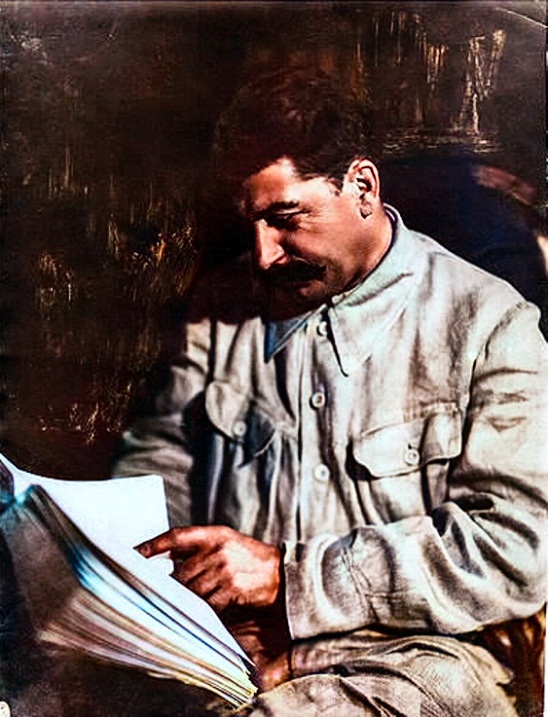Image is from this Washington Post article, which shows the Shabara artisanal mine, where cobalt and copper are dug out by hand.
This preamble got much of its information from this article in ROAPE, and this article in People's World.
Countries in the imperial core have increasingly advocated for Green New Deals, whose primary goal is to re-attract manufacturing capability to somewhat counter deindustrialization, and then export some of this renewable energy generation to other countries to gain profit. Just as the initial wave of industrialization was built on massive resource exploitation of coal and iron and then oil, this wave is being built on exploiting metals like lithium, cobalt, and rare earth elements. The DRC is one of the best case studies on the planet for understanding the new dynamic.
The DRC is, to your average Western country, a resource bonanza. It is the 11th largest country by land area, and contains lithium, copper, and cobalt in massive quantities, famously containing two thirds of the world's known cobalt supplies. The Western world and their institutions swarmed the DRC like piranhas, dismantling the Congo's sovereignty over its natural resources. China was not terribly involved in the privatisation process, but has stepped in to benefit from the West's work - Chinese corporations account for 40% of the production of major Congo cobalt projects (and 15 out of 19 cobalt mines), with Switzerland at 30% via Glencore, and Kazakhstan at 22%. The US, for whatever reason, withdrew from majority ownership of some projects in the mid-2010s, but is now anxious about China's position in the cobalt markets. Western countries in general have spent their time lately drawing up critical minerals strategies both to keep capitalism chugging along in their own countries, and attempt to weaken China, which invariably involves the Congo.
The Congo has attempted to resist imperialist encroachment. In 2018, the Kaliba administration asserted a new Mining Code which raised tax and royalty rates and increased state ownership in mining firms from 5% to 10%, and these changes were bitterly resisted by the West right to the end. Since 2019, under the Tshisekedi administration, the government established the state-owned EGC, which sought to take control over the processing and export of artisanal and small-scale cobalt production, which comprises 5-15% of cobalt production in the Congo. More recently, Tshisekedi is planning to move up the manufacturing chain - instead of merely mining cobalt, they want to refine it there and then make electric vehicle batteries and other such products with it, which would be an industry worth trillions of dollars. But so far, there hasn't been much movement away from having mining exports as the backbone of the economy, and it's doubtful that plans to just keep doing this until they get rich enough to build refineries and factories will work. The profits mostly go to Western countries and have failed to produce significant benefits for Congolese workers, nor resulted in the emergence of domestic industries so far. Reforms will help a little, but only a little, and they remain fundamentally constrained by the markets and the whims of the West.
Meanwhile, war and mass displacements have put immense stress on the country. There are 7.1 million displaced people in the DRC due to various conflicts and mass displacements - most recently, the war between the Congolese army and M23. Hundreds of thousands of people continue to be displaced every few months, and across the whole country, over 26 million require humanitarian aid. 6 million people have died in the eastern DRC in the last three decades, with hundreds of armed groups, both domestic and foreign, battling for resources and territory.
The COTW (Country of the Week) label is designed to spur discussion and debate about a specific country every week in order to help the community gain greater understanding of the domestic situation of often-understudied nations. If you've wanted to talk about the country or share your experiences, but have never found a relevant place to do so, now is your chance! However, don't worry - this is still a general news megathread where you can post about ongoing events from any country.
The Country of the Week is the Democratic Republic of the Congo! Feel free to chime in with books, essays, longform articles, even stories and anecdotes or rants. More detail here.
Please check out the HexAtlas!
The bulletins site is here!
The RSS feed is here.
Last week's thread is here.
Israel-Palestine Conflict
Sources on the fighting in Palestine against Israel. In general, CW for footage of battles, explosions, dead people, and so on:
UNRWA daily-ish reports on Israel's destruction and siege of Gaza and the West Bank.
English-language Palestinian Marxist-Leninist twitter account. Alt here.
English-language twitter account that collates news (and has automated posting when the person running it goes to sleep).
Arab-language twitter account with videos and images of fighting.
English-language (with some Arab retweets) Twitter account based in Lebanon. - Telegram is @IbnRiad.
English-language Palestinian Twitter account which reports on news from the Resistance Axis. - Telegram is @EyesOnSouth.
English-language Twitter account in the same group as the previous two. - Telegram here.
English-language PalestineResist telegram channel.
More telegram channels here for those interested.
Various sources that are covering the Ukraine conflict are also covering the one in Palestine, like Rybar.
Russia-Ukraine Conflict
Examples of Ukrainian Nazis and fascists
Examples of racism/euro-centrism during the Russia-Ukraine conflict
Sources:
Defense Politics Asia's youtube channel and their map. Their youtube channel has substantially diminished in quality but the map is still useful.
Moon of Alabama, which tends to have interesting analysis. Avoid the comment section.
Understanding War and the Saker: reactionary sources that have occasional insights on the war.
Alexander Mercouris, who does daily videos on the conflict. While he is a reactionary and surrounds himself with likeminded people, his daily update videos are relatively brainworm-free and good if you don't want to follow Russian telegram channels to get news. He also co-hosts The Duran, which is more explicitly conservative, racist, sexist, transphobic, anti-communist, etc when guests are invited on, but is just about tolerable when it's just the two of them if you want a little more analysis.
On the ground: Patrick Lancaster, an independent and very good journalist reporting in the warzone on the separatists' side.
Unedited videos of Russian/Ukrainian press conferences and speeches.
Pro-Russian Telegram Channels:
Again, CW for anti-LGBT and racist, sexist, etc speech, as well as combat footage.
https://t.me/aleksandr_skif ~ DPR's former Defense Minister and Colonel in the DPR's forces. Russian language.
https://t.me/Slavyangrad ~ A few different pro-Russian people gather frequent content for this channel (~100 posts per day), some socialist, but all socially reactionary. If you can only tolerate using one Russian telegram channel, I would recommend this one.
https://t.me/s/levigodman ~ Does daily update posts.
https://t.me/patricklancasternewstoday ~ Patrick Lancaster's telegram channel.
https://t.me/gonzowarr ~ A big Russian commentator.
https://t.me/rybar ~ One of, if not the, biggest Russian telegram channels focussing on the war out there. Actually quite balanced, maybe even pessimistic about Russia. Produces interesting and useful maps.
https://t.me/epoddubny ~ Russian language.
https://t.me/boris_rozhin ~ Russian language.
https://t.me/mod_russia_en ~ Russian Ministry of Defense. Does daily, if rather bland updates on the number of Ukrainians killed, etc. The figures appear to be approximately accurate; if you want, reduce all numbers by 25% as a 'propaganda tax', if you don't believe them. Does not cover everything, for obvious reasons, and virtually never details Russian losses.
https://t.me/UkraineHumanRightsAbuses ~ Pro-Russian, documents abuses that Ukraine commits.
Pro-Ukraine Telegram Channels:
Almost every Western media outlet.
https://discord.gg/projectowl ~ Pro-Ukrainian OSINT Discord.
https://t.me/ice_inii ~ Alleged Ukrainian account with a rather cynical take on the entire thing.


NYT: In Northern Israel, Clashes With Hezbollah Drive a Hospital Underground. Subterranean operations at Galilee Medical Center are a striking example of how life in northern Israel has been upended since Hezbollah began launching near-daily attacks.
Full text
archive.today • In Northern Israel, Clashes With Hezbollah Drives a Hospital Underground - The New York Times
Subterranean operations at Galilee Medical Center are a striking example of how life in northern Israel has been upended since Hezbollah began launching near-daily attacks.
By Johnatan Reiss
The entrance hall to the Galilee Medical Center in northern Israel is mostly empty and quiet. Roaring warplanes and the intermittent thunder of artillery have replaced the sounds of doctors, orderlies and patients at this major hospital closest to the border with Lebanon.
Nearly all of the hospital's staff members and patients have gone underground.
Getting to the hospital's nerve center these days involves navigating past 15-foot concrete barricades and multiple blast doors, then descending several floors into a labyrinthine subterranean complex.
That is where thousands of patients and hospital workers have been for the past six months as strikes have intensified between Israeli forces and Hezbollah, the powerful Iranian-backed militia in Lebanon, just six miles to the north.
The underground operation at Galilee Medical Center in Nahariya is one of the most striking examples of how life in northern Israel has been upended since Hezbollah began launching near-daily attacks against the Israeli military in October in solidarity with Hamas, the Iranian-backed group that led the attack on southern Israel that month.
The cross-border fire has prompted tens of thousands of Israelis to evacuate towns, villages and schools and forced factories and businesses to close. On the Lebanon side of the border, tens of thousands more have fled their homes.
The hospital had been preparing for such a scenario for years, given its proximity to one of the region's most volatile borders.
"We knew this moment would arrive, we just didn't know when," Dr. Masad Barhoum, the hospital's director general, said in an interview last week.
Hours after the Hamas-led attack on Oct. 7, Galilee Medical Center staff members feared that Hezbollah might mount a similar assault. Even before the government issued evacuation orders, hospital executives decided to relocate most of the vast complex to an underground backup annex. They reduced the 775-bed hospital to 30 percent capacity in case it needed to suddenly accommodate waves of new trauma patients.
"It's our duty to protect the people here," Dr. Barhoum said. "This is what I've been preparing for my whole life."
The hospital's towering internal medicine ward now stands empty, its wide, neon-lit hallways wrapped in silence. In the ward's current location below ground, the whirs of hospital machinery mingle with the beeps of golf carts carrying supplies through narrow tunnels that open into the hospital's parking lot, offering the only hint of sunlight.
Patients lie in beds separated by mobile curtain racks in a maze of halls. Visitors sit on plastic chairs in a makeshift waiting room, since the space is too crowded to allow everyone to pay a bedside visit. Tubes and wires running across the ceiling give the space the feeling of an engine room.
In the neonatal intensive care unit, new parents in protective gowns huddle to bottle-feed their baby in a dimly lit room. Doctors perform a procedure on another tiny patient a few feet away.
The neonatal unit was the first to move below ground on Oct. 7, said Dr. Vered Fleisher Sheffer, the unit's director.
"While everyone feels safer here," she said, "it's challenging because we are humans, and now we must stay underground."
Her unit also went underground in 2006, during Israel's last all-out war with Hezbollah: Dr. Fleisher Sheffer recalls commuting to the hospital along barren roads as air-raid sirens blared. A rocket hit the ophthalmology ward one day, but the patients had already been moved, hospital officials said.
That war lasted just over a month, and the threat from Hezbollah was felt less in the years that followed. Oct. 7 changed that.
The day before New York Times journalists visited the hospital, a Hezbollah strike hit a nearby Bedouin village, injuring 17 soldiers and two civilians. The injured were brought to the hospital's I.C.U., where one of the soldiers died on Sunday.
"These are our neighbors," Dr. Fleisher Sheffer said, referring to the Hezbollah militants. "It's not like they are going anywhere, and neither are we."
Are we 100% positive there's no Hamas in that underground hospital? Maybe we should drop a few bunker busters to make sure...
I wonder if anyone else’s life has been upended?
the tunnels are coming from inside the house
"Safest country for jews"